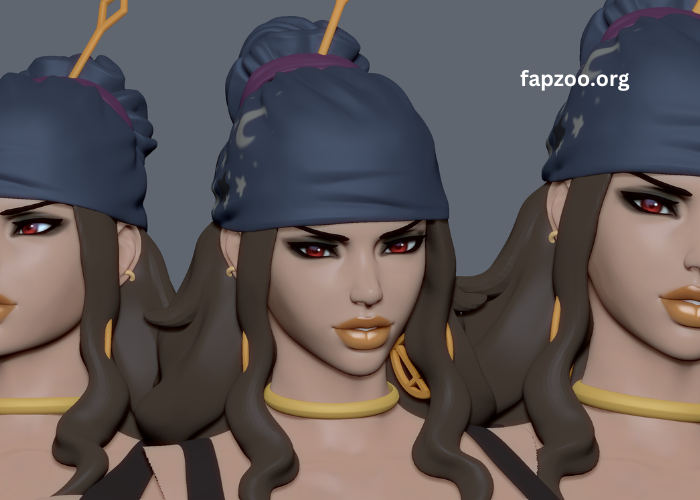In the world of internet slang and memes, some terms and phrases become so iconic that they transcend their origins and become a part of everyday online language. One such term that has captured the attention and laughter of millions is chimken.
This playful and humorous variation of the word “chicken” has become a key part of DoggoLingo, a language used by internet-savvy pet lovers, meme creators, and social media users. If you’re unfamiliar with chimken, this post will take you through its origins, its use in DoggoLingo, and why it has become so popular.
Key Points:
- Chimken is a humorous variation of the word “chicken” used in DoggoLingo.
- It is part of the meme culture that brings joy and laughter to online communities.
- The term has gained widespread popularity due to its use in internet humor and social media.
What Is DoggoLingo?
Before we dive deeper into chimken, it’s important to understand DoggoLingo. DoggoLingo is a playful, humorous language that emerged from internet culture, specifically from memes and social media posts that feature dogs and other animals. The language is intentionally silly and is designed to mimic how people imagine dogs might speak or think, often using exaggerated and amusing terms.
For example, in DoggoLingo, you might find words like doggo for dog, woof for bark, and pupper for puppy. The language plays on the affection people have for their pets, particularly dogs, and it brings a lighthearted, humorous touch to the way we communicate online. The use of DoggoLingo has extended beyond dogs, with many animal lovers adopting similar variations for other creatures as well.
Table 1: DoggoLingo Terms Comparison
| DoggoLingo Term | Standard English | Meaning |
| Doggo | Dog | Refers to a dog |
| Pupper | Puppy | A young or small dog |
| Chimken | Chicken | A playful version of chicken |
The creation and widespread use of DoggoLingo have made it a significant part of internet culture, with many people using it to add humor and personality to their posts, whether they’re sharing pictures of their pets or making memes.
Why Is Chimken So Popular?
The popularity of chimken can be attributed to several factors that make it so fun and engaging. First and foremost, it’s a playful and exaggerated version of the word “chicken,” making it sound cute and funny when used in memes or social media posts. The intentional misspelling of common words is a common theme in DoggoLingo, and chimken is no exception. The addition of the “k” instead of the “c” makes it sound quirky and even more endearing.
Another reason for its popularity is the meme culture that surrounds it. Memes thrive on humor, and the absurdity of chimken being used in place of chicken creates a comedic effect. It’s as if we’re imagining that chickens might actually call themselves chimkens in their own secret language, adding a layer of charm and innocence to the term.
Social media platforms like Twitter, Instagram, and Reddit play a big role in spreading these kinds of internet phrases. The more people use chimken in their posts, the more it becomes ingrained in the collective online lexicon, encouraging others to adopt the term in their own memes and conversations.
Note: The power of memes and social media platforms is what fuels the popularity of internet slang like chimken, turning it into a cultural phenomenon.
How Did Chimken Emerge in Meme Culture?
The exact origins of chimken are difficult to pinpoint, but like many internet phenomena, it evolved gradually through user-generated content. The term likely began as part of the humorous and playful nature of DoggoLingo. It wasn’t long before people began using it in memes that featured animals, particularly chickens, in humorous or silly situations.
One of the most notable examples of chimken in meme culture involves images or videos of chickens that are captioned with the word chimken, often accompanied by ridiculous scenarios. These posts take something ordinary, like a chicken, and turn it into something fun and outlandish, which is the essence of internet humor. Over time, chimken became more widely recognized as part of the DoggoLingo family, making its way into posts and captions all over the internet.
The meme culture surrounding chimken also extends to video games and livestreams, where content creators may refer to the term when discussing animals or even using it for comedic effect during gameplay. This cross-platform usage helps chimken remain relevant and widespread across the online community.
Table 2: Popular Memes Featuring Chimken
| Meme Source | Description | Example Phrase |
| Social Media Memes | Posts featuring chickens in humorous situations | “Look at this little chimken!” |
| Livestreams | Streamers using the term to engage with audiences | “Time to feed my chimken!” |
| Animal Photos/Videos | Photos of chickens with chimken captions | “Such a cute chimken!” |
Note: The spread of memes featuring chimken is largely fueled by social media, where creativity and humor are celebrated.
How Does Chimken Fit into the Larger Meme Culture?
In the larger context of internet meme culture, chimken is just one example of how playful language can capture the imagination of users. Memes have long been a way for people to connect, laugh, and express themselves in a way that feels authentic and communal. The term chimken fits perfectly into this framework because it is simple, funny, and universally recognizable.
Much like other meme terms such as doggo, bork, or hecc, chimken taps into the shared experience of enjoying silly content online. It’s not just about the word itself; it’s about the sense of humor and connection that comes with using it. By adopting and spreading terms like chimken, internet users are participating in a collective experience of joy, amusement, and creativity.
Additionally, the rise of chimken is indicative of a larger trend in internet culture, where humor often comes from exaggerating or distorting everyday language. Just as people use intentional misspellings for comedic effect, chimken adds another layer of absurdity to our interactions with the online world.
Conclusion
Chimken may seem like a simple, humorous term, but its popularity is a reflection of how language, memes, and social media intersect in today’s digital age. As part of the broader phenomenon of DoggoLingo, chimken brings a sense of fun, joy, and lightheartedness to the online world.
Whether you’re laughing at a funny meme, sharing a picture of a chicken, or engaging in a playful online conversation, chimken adds to the humor and warmth that internet culture is known for.
The term chimken serves as a reminder of how language evolves in the digital world, creating new forms of communication that bring people together through shared humor. It’s a perfect example of how the internet has its own way of turning everyday things into sources of laughter and creativity.
FAQ’s
- What is chimken in DoggoLingo?
Chimken is a humorous and playful variation of the word “chicken” used in DoggoLingo, a language popular in internet memes and social media. - How did chimken become popular?
Chimken became popular through memes and social media posts that humorously featured chickens and other animals. Its use spread as more people adopted the term for fun. - Is chimken only used for chickens?
While chimken originated as a term for chickens, it has been widely adopted in various memes and internet posts, often used for comedic effect in a variety of contexts. - What role does chimken play in internet culture?
Chimken contributes to the humor and creativity of internet culture, especially in meme communities and social media, where playful language is embraced. - Can I use chimken in everyday conversations?
Although chimken is primarily used in internet and meme culture, you can certainly use it in a fun or playful way with friends who understand the context of DoggoLingo!



